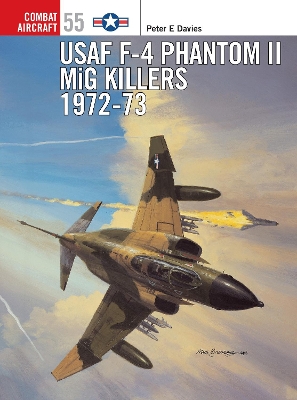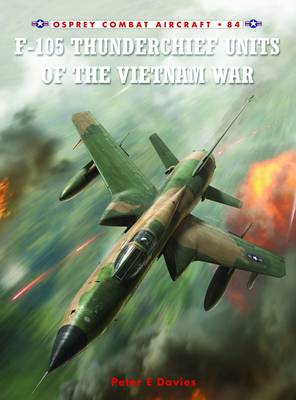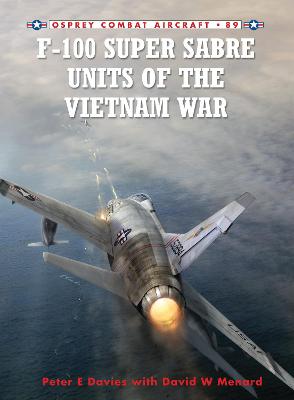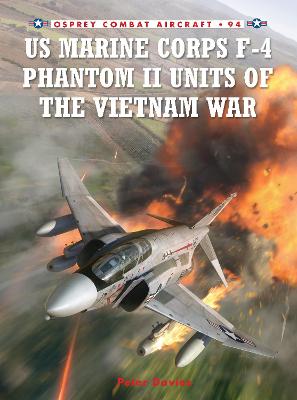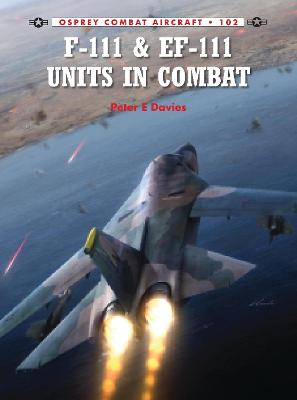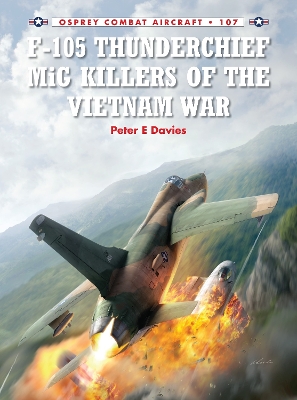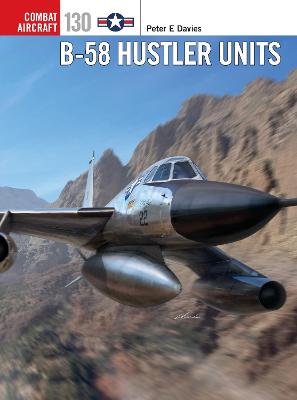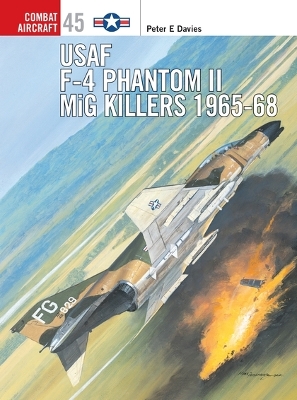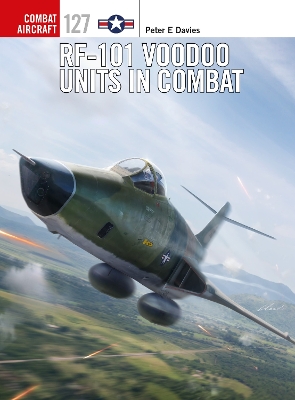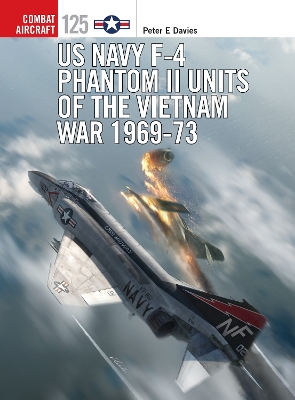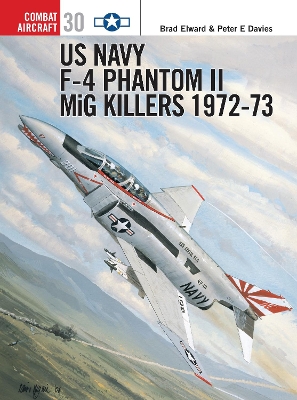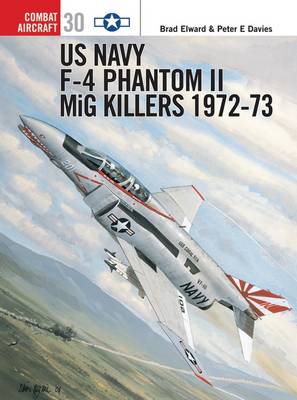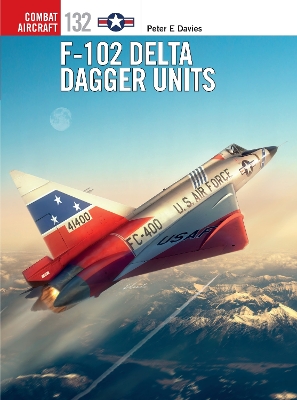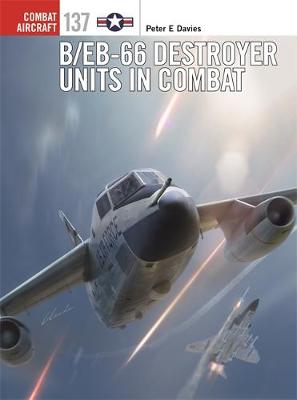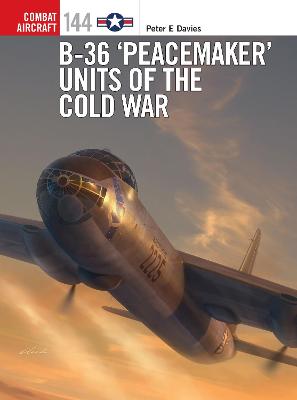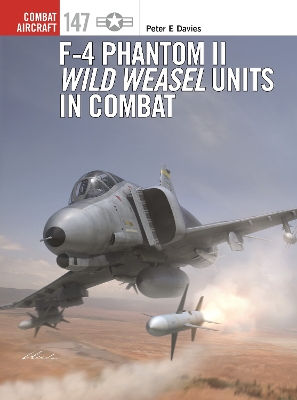Combat Aircraft
7 primary works • 18 total works
Book 55
Book 84
Book 89
F-100 Super Sabre Units of the Vietnam War
by Peter E. Davies and David Menard
Book 94
US Marine Corps F-4 Phantom II Units of the Vietnam War
by Peter E. Davies
Book 102
Book 107
Book 130
Supported by contemporary first-hand accounts, photography, and full-colour illustrations, this study explores the history of this ground-breaking aircraft from its conception to its little-known testing for use in the Vietnam War.
In combat, the RF 101 was usually 'first in-last out' for strike missions. This made it a ready target, with a solo aircraft flying straight and level to gather target photo evidence at low-altitude offering enemy gunners plenty of opportunity to shoot the Voodoo down. This study tells the combat stories of this extraordinary aircraft, highlighting the difficulty of the missions on which it was sent and the courage of its pilots.
The aircraft pioneered the use of long-range, radar-guided missiles in combat, although the majority of its Vietnam missions involved ground-attack with a variety of innovative ordnance. From 1968 to 1973 the Phantom II was the standard U.S. Navy fighter in Southeast Asia, having replaced several other types. Its performance and versatility enabled it to perform a variety of different missions, and switch roles as necessary, in the assault on some of the world's most heavily defended territory. Including detailed colour profiles and first-person commentary from active participants in the F-4's naval combat history, this is a detailed study of the U.S. armed services' most famous post-war fighter.
US Navy F-4 Phantom II MiG Killers 1972-73
by Brad Elward and Peter E. Davies
US Navy F-4 Phantom II MiG Killers 1972-73
by Brad Elward and Peter E. Davies
This title examines the unique aspects of the Phantom that made it so crucial to US Navy pilots during the Vietnam War - its massive engine power, long range, speed, the most powerful airborne search and fire-control radar installed in a fighter at the time, and of course its versatility as a ground attack and air-to-air platform. Packed with first hand accounts, unique profile artwork and rare photographs this is the history of one of the most important aircraft to be stationed on carriers off Southeast Asia during the war.
A massive research and development effort produced the F-102A '1954 Fighter', the J57 afterburning turbojet, its Hughes MX-1554 fire control system and, in due course, the Semi-Active Ground Environment (SAGE) radar and communications network that covered North America to guide its airborne defences. In service, F-102As also provided air defence in Europe with USAFE, in the Far East and in Southeast Asia, where they protected US airbases in South Vietnam and Thailand from air attack by North Vietnamese fighters and bombers and escorted B-52s and fighter-bombers on their attack sorties.
This illustrated study from leading expert Peter E. Davis details the design, development, and deployment of the futuristic F-102, including its complex research program and role in Vietnam.
This illustrated study focuses on the oft-overlooked B-66 series, examining their vital contributions to the Vietnam War and the bravery of those who operated them in some of the most challenging situations imaginable. Author Peter E. Davies also explores how the technology and tactics devised during the period made possible the development of the EF-111A Raven, an invaluable component of the Desert Storm combat scenario over Iraq and Kuwait in 1991, and the US Navy's EA-6B Prowler, which entered service towards the end of the Vietnam War.
Conceived during 1941 in case Germany occupied Britain, when US bombers would then have insufficient range to retaliate, the B-36 was to be primarily a '10,000-mile bomber' with heavy defensive armament, six engines and a performance that would prevent interception by fighters. Although rapid developments in jet engine and high-speed airframe technology quickly made it obsolescent, the B-36 took part in many important nuclear test programmes. The aircraft also provided the US nuclear deterrent until the faster B-52 became available in 1955. It was one of the first aircraft to use substantial amounts of magnesium in its structure, leading to the bomber's 'Magnesium Overcast' nickname. It earned many superlatives due to the size and complexity of its structure, which used 27 miles of wiring, had a wingspan longer than the Wright brothers' first flight, equivalent engine power to 400 cars, the same internal capacity as three five-room houses and 27,000 gallons of internal fuel - enough to propel a car around the world 18 times. Much was made of the fact that the wing was deep enough to allow engineers to enter it and maintain the engines in flight. B-36s continued in the bomber and reconnaissance role until their retirement in February 1959 following 11 years in SAC. Convair employees were invited to suggest names for the giant aircraft, eliciting suggestions such as 'King Kong Bomber', 'Condor', 'Texan' and 'Unbelievable', but the most popular was 'Peacemaker'. Oddly, objections from religious groups deterred the USAF from ever adopting it officially.
This fully illustrated volume includes first-hand accounts, original photographs and up to 30 profile artworks depicting in detail the complexity of this superlative aircraft.
The advent of the surface-to-air missile (SAM) in the early 1950s threatened the whole concept of aerial bombing from medium and high altitude. Countermeasures were developed during the Korean War, but with little initial success.
It was only in the closing stages of the Vietnam War, with the F-4Cww Phantom II (Wild Weasel 4), that this equipment started to become successful enough to allow a substantial investment in converting 116 F-4E Phantom IIs into dedicated SEAD aircraft. This move introduced a new generation of anti-radar missiles which became invaluable in later operations including operations Desert Shield, Desert Storm and Northern Watch over Iraq. This volume features dynamic archival photography from crews who flew the jet, alongside mission accounts and technical details of the development and fielding of the F-4 Wild Weasel in its various iterations.
Including specially commissioned artwork of ‘sharkmouthed’ Phantom IIs in Vietnam jungle camouflage and more modern USAF ‘Ghost Gray’, this book is the ultimate visual and technical guide to the F-4 Phantom II Wild Weasel Units in combat.
